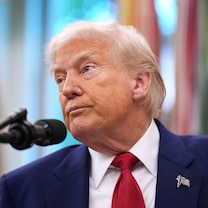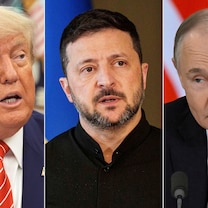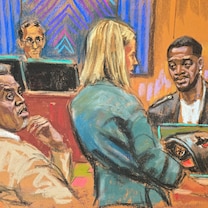What you need to know about the latest cease-fire in Syria
It has been in effect for over 24 hours.
— -- It has been in effect for over 24 hours, but the limited cease-fire in Syria’s southwest corner is no cause for celebration.
An agreement between the U.S., Russia and Jordan to halt fighting in three regions in the war-torn country was announced Friday as President Donald Trump and President Vladimir Putin were meeting -- the result of months of behind-the-scenes negotiations.
But despite several attempted cease-fires in the past, there has still been no solution to the country’s devastating six-plus-year civil war -- and as the United Nations convenes its seventh attempt at indirect peace talks, it's a reminder that no solution, including this limited cease-fire in the country’s southwest, will be quick or easy.
Is it working?
The latest signs out of Syria indicate that while the cease-fire held for the most part for its first 24 hours, there was some scattered fighting in certain areas, including an all-out assault by the regime of Syrian President Bashar al-Assad.
His forces and their Iranian-backed militia allies launched an attack on the outskirt of as-Suwayda, a city near the border with Jordan, leading to some clashes with rebel groups, according to the Britain-based Syrian Observatory for Human Rights monitoring group. One rebel group spokesman told Reuters that the regime and the Iranian-backed militias “used all types of weapons from aerial bombing to artillery and an unprecedented ground offensive.”
It's unclear if this part of as-Suwayda is under the cease-fire agreement. The rebel spokesman said that the army was able to seize at least seven villages, while an official army statement said they had recaptured several towns, villages and strategic hilltops in the eastern Suwayda countryside, according to Reuters.
There was also some minor shelling in Daraa, a city on the border with Jordan, and the surrounding area, as well as heavy machine gun fire exchanged outside Al-Quneitra, near the Golan Heights, according to SOHR.
Where is it?
How could violence in one part of a province not violate a cease-fire in another part? This agreement encompasses a small area where historically there has been less violence.
There are three de-escalation zones within three southwestern Syria provinces –- Daraa, as-Suwayda and Quneitra –- where the cease-fire has been implemented, according to Russian Foreign Minister Sergei Lavrov. The outlines of those zones have not been revealed publicly by the U.S. government.
Southern Syria is mainly divided between the regime, backed by Russia, and a coalition of rebel forces known as the Southern Front, with a small pocket of ISIS-aligned fighters and other jihadist groups. While the U.S. does not have troops in this area, both it and Jordan are in close contact with the rebel groups.
Who's involved?
The agreement itself, though, was brokered by the three international powers, not the players on the ground, leaving some to question how much the warring sides will actually abide by the terms. The Russians are supposed to use their "influence" to guarantee Assad and his allies abide by the cease-fire, while the U.S. and Jordan are supposed to deliver the rebels.
“The parties weren’t at the table nor did they sign anything,” a senior State Department official conceded to ABC News, but said that Russia, the U.S. and Jordan “were proxies for the warring sides and committed to use their influence with those parties to ensure compliance.”
“That necessarily supposes interaction between the parties to the arrangement and the actual warring sides to ensure buy-in and support,” the official added, saying both the rebels and Assad were interested in a cease-fire.
The arrangement also leaves some key players in this conflict out of the equation, such as Iran and the Lebanese Islamist group Hezbollah. Without their support, it’s unclear how successful it can remain.
How's it being enforced?
It is still unclear how the agreement will be enforced.
The U.S. side still declines to say, arguing that more meetings are scheduled this week to work out the details, but Lavrov has said it would be Russian military police enforcing the agreement, with close U.S. and Jordanian coordination at a joint monitoring center in Jordan's capital Amman.
Until then, the outside powers are supposed to ensure adherence using their own influence.
What comes next?
The challenge now is to keep the relative peace in the southwest and expand it. The Trump administration hopes that what can start as a small cease-fire in one part of the country could lay the groundwork for greater cooperation between the U.S. and Russia elsewhere and ultimately a wider peace, according to a senior State Department official.
“You set in place the sort of infrastructure for a durable cease-fire that creates kind of a more auspicious environment for a broader political process and hopefully spreading this de-escalation to other parts of the country,” the official said.
To that end, Secretary of State Rex Tillerson said Monday while in Turkey that the U.S is working with that country, Syria’s northern neighbor, to try a cease-fire in the north of the country as well.
“We’re making some progress down in Syria. We are hopeful that we can replicate that with Turkey on some areas in the northern part of Syria,” he said at the U.S. Consulate in Istanbul.





